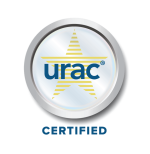Atrial fibrillation (AF) is projected to affect 2.7 to 6.1 million citizens in the United States. This amount is anticipated to rise to 7.1 million by 2035 with the aging population of the United States. In 2018, AF was mentioned on 175,326 death certificates and was the underlying cause of death in 25,845 of those deaths. The number of deaths caused by atrial fibrillation being the primary or contributing cause of death has been increasing for several years.
Atrial fibrillation is linked with reduced quality of life and an increased prevalence of adverse effects such as increased rate of hospitalizations, heart failure, stroke, and mortality. Hence, prompt identification of this condition is vital to develop the most suitable management scheme. According to non-randomized trials, remote patient monitoring can improve results by endowing precise and early detection, reducing hospitalizations, readmissions, and all-cause mortality rates.
What is atrial fibrillation?
Atrial fibrillation (AF), also termed AFib, is the most common rhythm disorder involving the heart. Atrial fibrillation is characterized by irregular and frequently fast heart rate that happens when the heart’s two upper compartments, the atria, have disordered electrical signals. Instead of the impulse spreading in a systematized approach in the heart, numerous impulses initiate simultaneously and travel through the atria and rival for a chance to be transmitted within the AV node. The AV node limits the number of impulses propagated to the ventricles, but several impulses are transmitted in an exceedingly fast and disordered manner. The ventricles then contract irregularly, resulting in an irregular and fast heartbeat that ranges from 100 to 175 beats a minute.
What are the consequences of atrial fibrillation?
Some people survive for ages with atrial fibrillation void of complications. However, atrial fibrillation is the primary diagnosis for more than 454,000 hospitalizations each year in the United States. The condition contributes to about 158,000 deaths each year. However, atrial fibrillation can lead to upcoming problems related to an augmented risk of stroke, heart failure, and even death. Individuals with atrial fibrillation have 5 to 7 times more risk of stroke than average individuals. Since the heart is beating fast and erratic, blood does not flow very laminarly. It creates blood with a greater possibility to clot. If a clot is propelled out of the heart, it can travel to the lungs, producing an embolism or brain, causing a stroke. These clots can likewise travel to other body parts (heart, kidneys, intestines) and cause debilitating conditions. Atrial fibrillation can also reduce the pumping ability of the heart. An irregular heartbeat can make the heart function less efficiently, significantly weaken the heart, and lead to heart failure.
What causes atrial fibrillation?
There is no single etiology of atrial fibrillation. Abnormalities or damage to the structure of the heart are the foremost common cause of atrial fibrillation. The chance of developing atrial fibrillation rises with age, predominantly after age 60 years old. It is also associated with many conditions, including hypertension, heart surgery, cardiomyopathy, heart valve disease, congenital heart disease, pericarditis, coronary artery disease, heart failure, pulmonary hypertension, , chronic lung disease, hyperthyroidism, and viral infection. However, several people with atrial fibrillation have no associated conditions or heart defects and no cause is often found in a condition called lone atrial fibrillation. In this condition, the cause is usually unclear, and severe complications are infrequent. In these cases, atrial fibrillation could be associated to alcohol or excessive caffeine use, certain drugs, stress, electrolyte or metabolic imbalances, or genetic factors.
What are the symptoms of atrial fibrillation?
The symptoms of atrial fibrillation are different for each patient. Some experience daily symptoms. Other patients have atrial fibrillation without having any symptoms. Common symptoms of atrial fibrillation that can be experienced by affected individuals include dizziness, shortness of breath, lightheadedness, tiredness, weakness, chest pain, difficulty exercising, and palpitations, which is the most common described symptom.
How is atrial fibrillation diagnosed?
To diagnose atrial fibrillation, a thorough history and physical examination with monitoring devices help the doctor determine if an irregular heart rhythm is causing the symptoms in a patient. The most commonly used test to diagnose atrial fibrillation is the electrocardiogram (ECG). An ECG records the electrical signal from the heart to test for numerous heart conditions like disturbances in rate and rhythm. Some people have intermittent symptoms that are very sporadic and need a particular monitor to capture the occurrence of this disturbance in the heart’s rhythm that may include a Holter monitor, portable event recorder, and transtelephonic monitor. The transtelephonic monitor can produce a strip of the present cardiac rhythm transmitted to the doctor over the telephone. A Holter monitor is a small external recorder worn over a short period, usually one to three days. The electrical impulses are continuously recorded and stored in the monitor. These data will be analyzed using a computer to evaluate the rhythm of the heart. The portable event monitor is a monitor that is applicable for patients who have less frequent irregular heartbeat episodes and symptom episodes. The patient presses a button to activate the monitor when symptoms occur. The device records the heart’s electrical activity and transmits the recorded information over a telephone line to reach the doctor for evaluation. The portable event monitor is very useful in determining what heart rhythm is causing the patient’s symptoms. The use of these monitoring methods can miss atrial fibrillation. The use of electrocardiogram and Holter monitoring that documents ECG information in a limited period mostly will not document atrial fibrillation in patients with paroxysmal and infrequent episodes. In addition, short-term ambulatory electrocardiography devices and extended cardiac monitoring like the transtelephonic monitor are cumbersome. These monitoring approaches often fail to capture atrial fibrillation within the monitoring period. Hence atrial fibrillation is often not diagnosed and therefore goes untreated.
Top 3 benefits of remote patient monitoring in patients with atrial fibrillation
Research studies also found that patients introduced earlier to remote patient monitoring and learning regarding the usefulness and benefits of remote patient monitoring are more likely to utilize it in terms of monitoring. Researchers have also shown that education of patients regarding the use of remote patient monitoring devices in documenting the occurrence of atrial fibrillation escalates patient acceptance and adherence to monitoring. Patients that use remote patient monitoring report a sense of relief and fulfillment with the knowledge of the continuous monitoring provided by the devices and experience an improved quality of life. Diagnosis and management. Remote patient monitoring devices for atrial fibrillation serve as an invaluable tool for diagnosis and management. Recent developments have upgraded the capability to care for patients with atrial fibrillation. Early identification and management of atrial fibrillation can decrease the effect of persistent or permanent atrial fibrillation. Early initiation of anticoagulant therapy can reduce the development of strokes. More comprehensive and real-time remote patient monitoring can aid in assessing and improving the efficiency of antiarrhythmic drug therapy, rate control medications, and surgical ablation procedures.
1. Diagnosis and management
Remote patient monitoring devices for atrial fibrillation serve as an invaluable tool for diagnosis and management. Recent developments have upgraded the capability to care for patients with atrial fibrillation. Early identification and management of atrial fibrillation can decrease the effect of persistent or permanent atrial fibrillation. Early initiation of anticoagulant therapy can reduce the development of strokes. More comprehensive and real-time remote patient monitoring can aid in assessing and improving the efficiency of antiarrhythmic drug therapy, rate control medications, and surgical ablation procedures.
2. Continuous data collection and self-management
Newer remote patient monitoring devices allow ECG data to be collected continuously for extended time intervals with no encumbrance to the patient. These devices are more reliable to identify subclinical and atypical atrial fibrillation and its concomitant triggers and symptoms. Additionally, remote patient monitoring can be used in a real-time setting and dynamically involves patients in self-management. Numerous patients nowadays are now utilizing mobile health technologies like smartwatches on an everyday basis to monitor atrial fibrillation. The developments in remote patient monitoring have influenced clinical decision-making and practice in diagnosing atrial fibrillation.
3. Patient acceptance and adherence
Current clinical guidelines strongly recommend the practice of remote patient monitoring for patients with atrial fibrillation. However, studies have not conclusively revealed a reduction in hospitalization rates compared to conventional follow-up. Research studies have also shown no difference in cardiovascular mortality and all-cause mortality. Nevertheless, the comparative equivalence in general clinical outcomes with conventional follow-up should encourage patients and doctors in topographical areas where remote patient monitoring may be the only feasible option.
Takeaway
Atrial fibrillation is the most common rhythm disorder of the heart encountered in the United States. The symptoms associated with this condition are comparable to those of other cardiac diseases, which might delay detection, diagnosis, and management. In addition, monitoring approaches often fail to capture atrial fibrillation within the monitoring period. Hence atrial fibrillation is often not diagnosed and therefore goes untreated. Therefore, the use of newer remote patient monitoring devices that can be worn or implanted for more extended time allows ECG data to be collected continuously for extended periods with less burden on the patient. Wireless remote monitoring of implanted devices is revolutionizing how doctors manage this subgroup of patients. Remote patient monitoring aids in improving clinical care, early detection, and treatment of atrial fibrillation, resulting in reduced health care costs associated with atrial fibrillation. As technology continues to evolve and remote patient monitoring devices become more integrated into clinical practice, the use of these devices to better recognize and treat atrial fibrillation is becoming vital.








